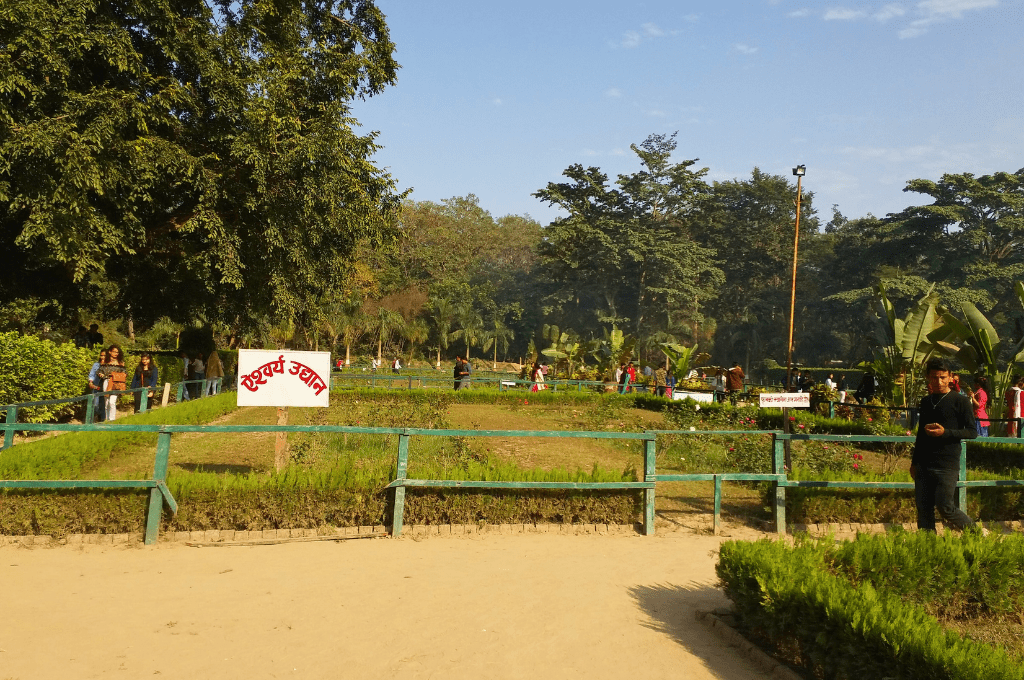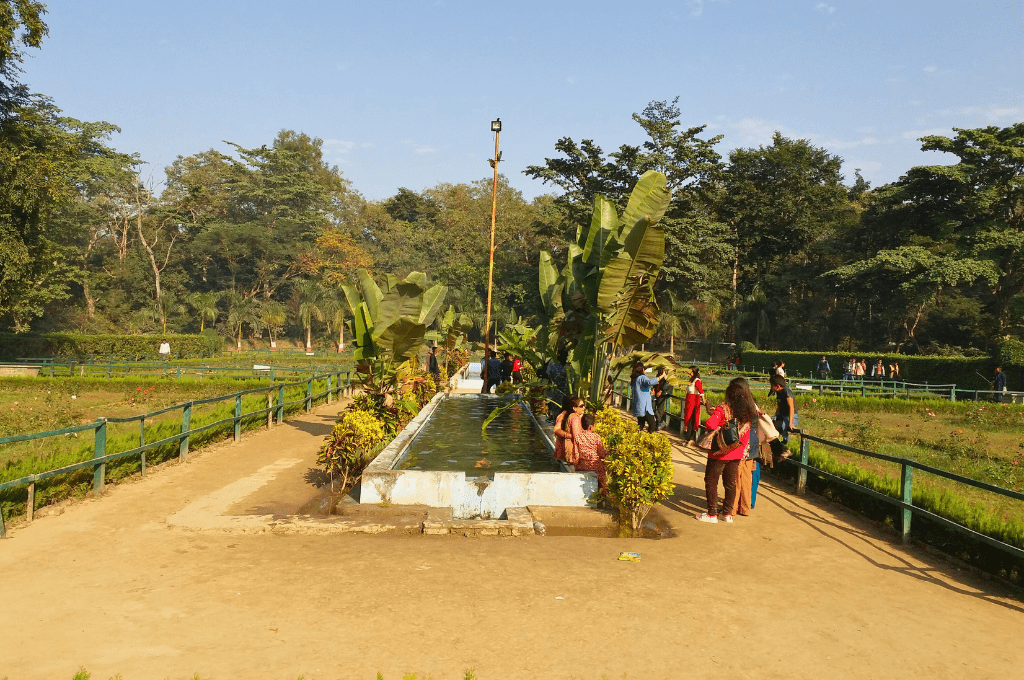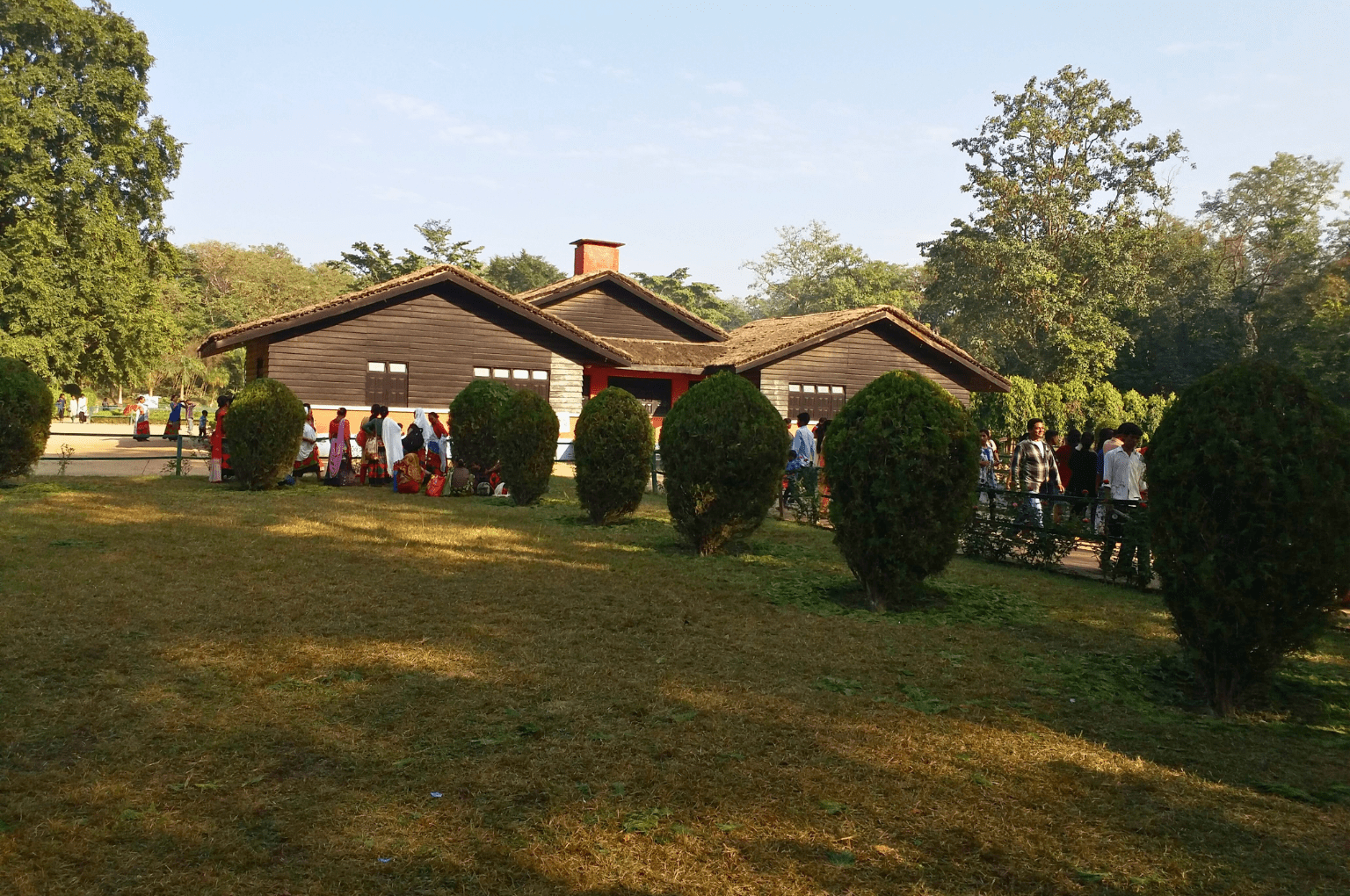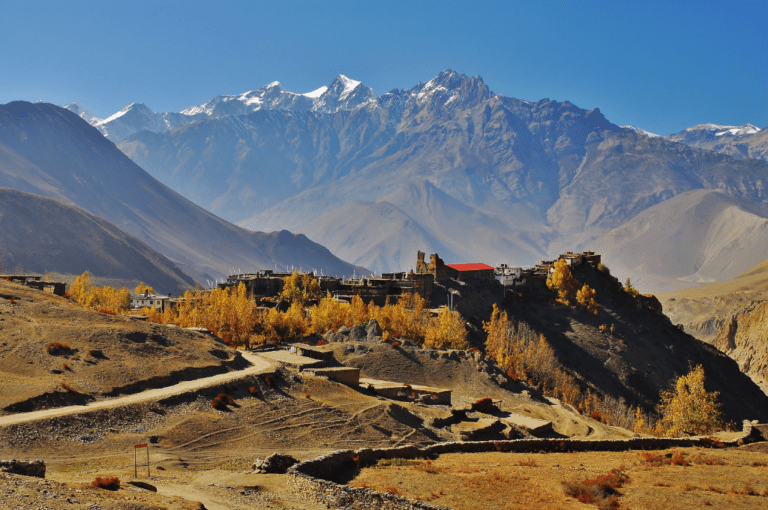Tikapur Park, also known as Tikapur Great Park, emerges as a captivating paradise capable of enchanting anyone within its borders. It is located about 18 kilometres south of Lamki Bazaar on Mahendra Highway. Like a resplendent new bride adorned in exquisite makeup, the park exudes a mesmerizing allure, gracefully nestled on the banks of the majestic Karnali River, eagerly awaiting its groom.
A symphony of colours awaits visitors at Tikapur Park, where hundreds of flowers burst into vibrant blooms, creating a kaleidoscope of reds, whites, blacks, pinks, yellows, greens, and more. Each step taken through this floral wonderland feels like a brushstroke on a living canvas, painting an unforgettable memory in the minds of those who wander its paths.

Situated approximately four kilometres away from the eastern side of Tikapur town, this verdant oasis has earned renown as a cherished picnic spot and a favoured destination for sightseers among the locals. Its serene ambience and natural splendour make it an ideal retreat from the hustle and bustle of daily life.
As you venture into Tikapur Park, the sweet melodies of chirping birds and the gentle rustling of leaves serenade you, enhancing the sense of harmony and tranquillity surrounding the park. Fresh blossoms infuse the air, creating a heady perfume that heightens the sensory experience.
With well-manicured pathways leading you through the diverse landscape, the park beckons you to explore every nook and cranny. Whether you seek solitude amidst nature’s embrace or a joyful outing with loved ones, Tikapur Park has something to offer everyone.
Also, check these Lakes in Nepal

The vibrant tapestry of colours, the whispering breeze, and the timeless presence of the Karnali River combine to form an enchanting symphony of nature’s beauty. With each passing moment, the park reveals new wonders and delights, inviting you to immerse yourself in the wonders of the natural world.
In the embrace of Tikapur Park, time seems to slow down, allowing you to savour each precious instant. So, as the spring season unfolds its floral splendour, do not miss the opportunity to visit this bewitching haven, for Tikapur Park will surely leave an indelible mark on your heart and soul.
Besides being one of the popular destinations in Tikapur, this area holds significant historical importance. In 1971, King Mahendra spent a month here, administering the kingdom while recovering from an illness he contracted during a hunting trip in Suklaphanta Wildlife Reserve. Doctors advised him to rest in the parking area due to its believed healing qualities, as the air was said to come directly from Mansarobar of Tibet, flowing through the Karnali River.

During his stay, King Mahendra conceived a vision to establish a garden and town in this place. His wish was fulfilled by his son, the late King Birendra, who entrusted former minister Khadga Bahadur Singh with the project. Under their direction, the park and town were built, divided into three parts: Birendra Bisram Griha, Aswarya Batika, and Mahendra Arogya Griha, along with the beautiful Ratna Udyan housing flower and fruit gardens. The park also features two wooden houses that were once reserved for the royal family members but are now closed to the public.
The park’s water fountain is a favourite spot for domestic tourists, offering a picturesque background for photographs. Additionally, the area along the Karnali River has been designated as a picnic spot that can accommodate thousands of people at a time. While the Tikapur Development Committee previously managed the park, it is now under the responsibility of Tikapur Municipality.

However, the park’s beauty is gradually fading due to a lack of proper care and maintenance. Locals are dissatisfied with the efforts of the current employees assigned to look after the park. Proactive measures are required to preserve its historical significance and enhance its appeal as a central tourist hub.
With proper attention, maintenance, and strategic promotion, this historic park has the potential to regain its former glory and become a thriving tourist destination, benefiting both the local community and visitors from afar. By preserving its historical significance and natural beauty, the park can continue to be a treasured location for generations.



